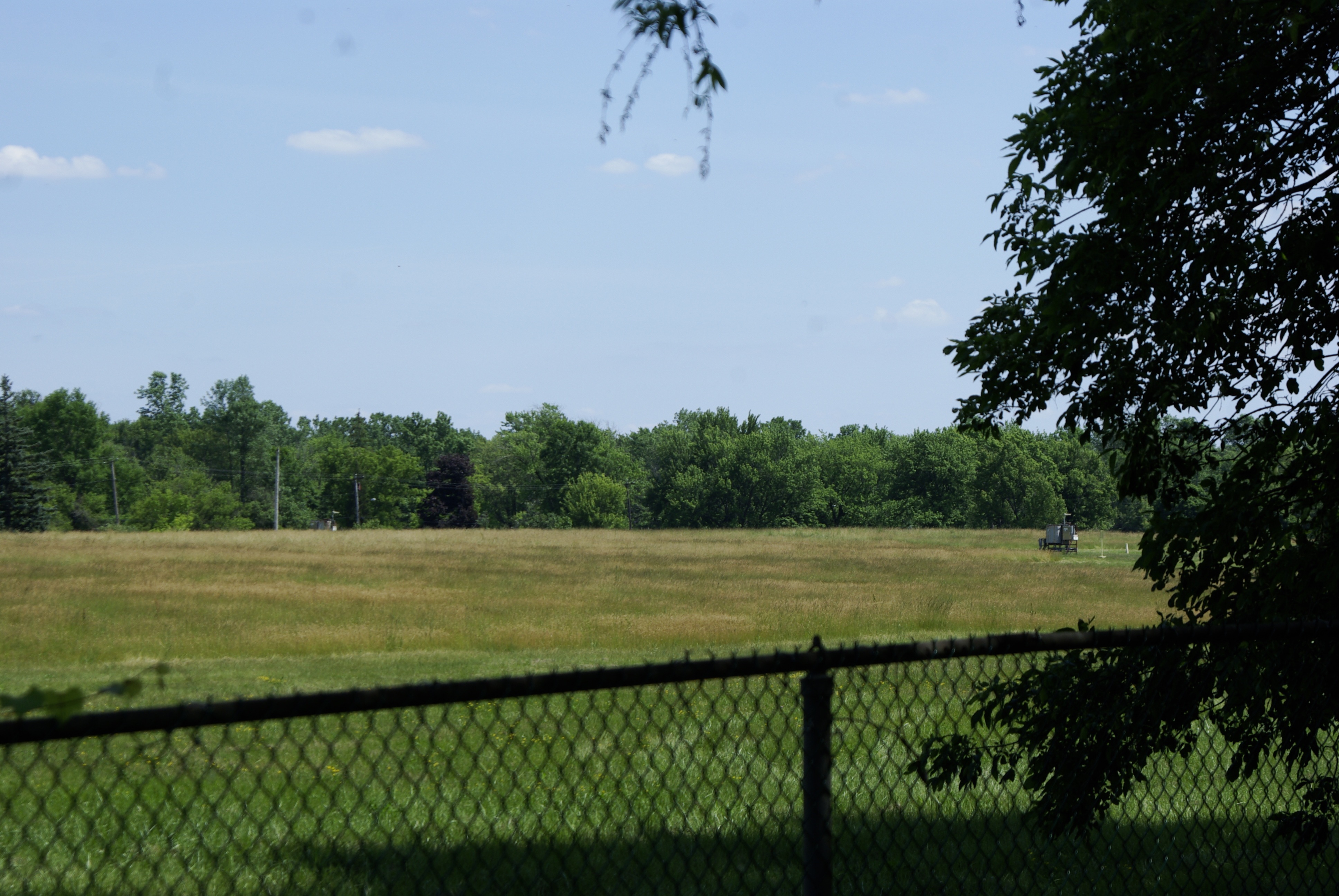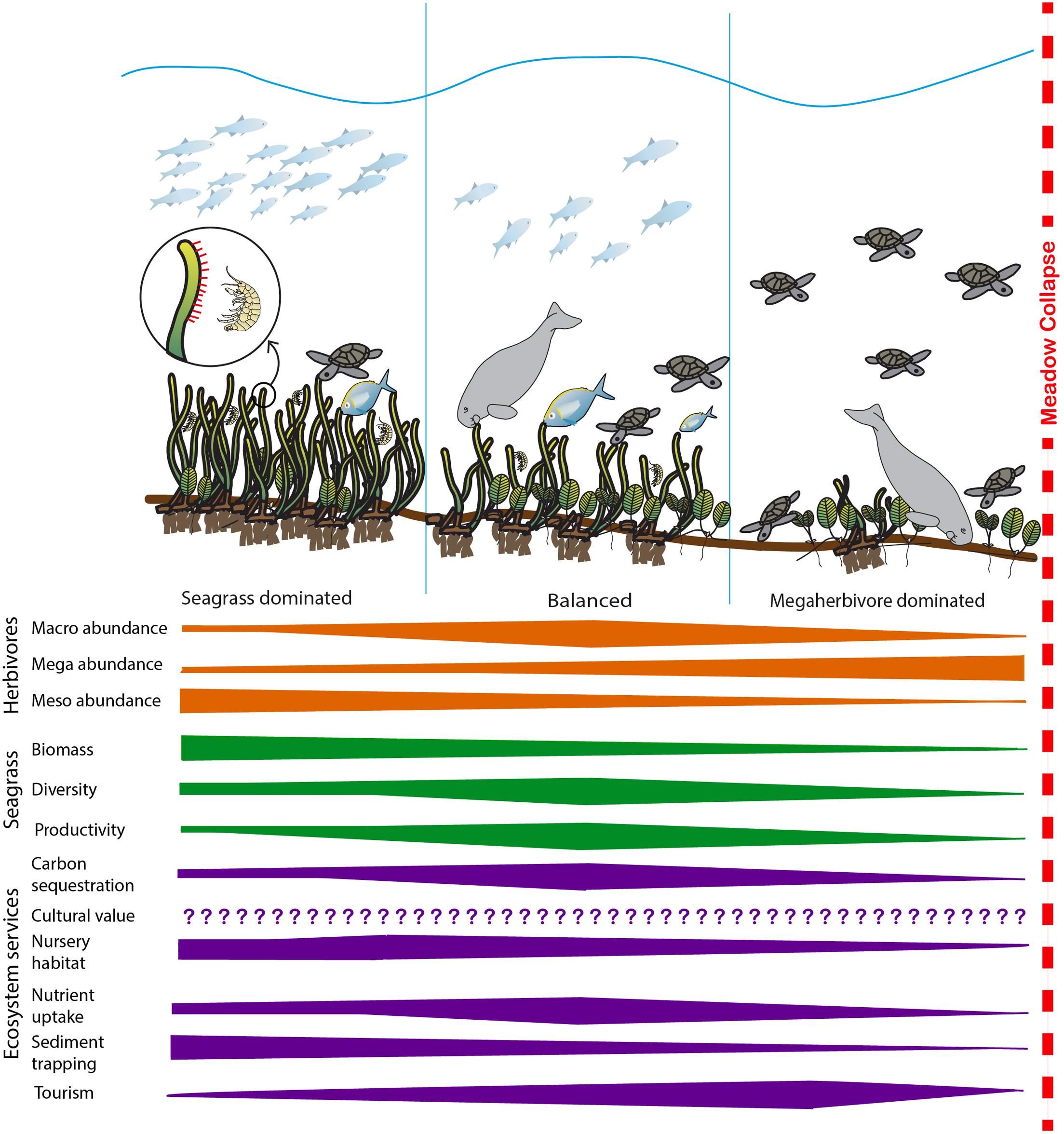|
Old Field (ecology)
Old field is a term used in ecology to describe lands formerly cultivated or grazed but later abandoned. The dominant flora include perennial grasses, heaths and herbaceous plants. Old fields are canonically defined as an intermediate stage found in ecological succession in an ecosystem advancing towards its climax community, a concept which has been debated by contemporary ecologists for some time. Old field sites are often marginal lands with soil quality unsuitable for crops or pasture. Examples include abandoned farmlands in central Ontario, along the edge of the Canadian Shield. Stress tolerant species with wide seed dispersal ranges are able to colonize cultivated fields after their initial abandonment, usually followed by perennial grasses. The succession of old fields culminates in takeover by trees and shrubs, eventually leading to a climax forest stand. How old fields form Most old fields form as a result of agricultural land abandonment, the rate of which has been ... [...More Info...] [...Related Items...] OR: [Wikipedia] [Google] [Baidu] |
Grasses
Poaceae () or Gramineae () is a large and nearly ubiquitous family of monocotyledonous flowering plants commonly known as grasses. It includes the cereal grasses, bamboos and the grasses of natural grassland and species cultivated in lawns and pasture. The latter are commonly referred to collectively as grass. With around 780 genera and around 12,000 species, the Poaceae is the fifth-largest plant family, following the Asteraceae, Orchidaceae, Fabaceae and Rubiaceae. The Poaceae are the most economically important plant family, providing staple foods from domesticated cereal crops such as maize, wheat, rice, barley, and millet as well as feed for meat-producing animals. They provide, through direct human consumption, just over one-half (51%) of all dietary energy; rice provides 20%, wheat supplies 20%, maize (corn) 5.5%, and other grains 6%. Some members of the Poaceae are used as building materials (bamboo, thatch, and straw); others can provide a source of biofuel, primari ... [...More Info...] [...Related Items...] OR: [Wikipedia] [Google] [Baidu] |
Primary Succession
Primary succession is the beginning step of ecological succession after an extreme disturbance, which usually occurs in an environment devoid of vegetation and other organisms. These environments are typically lacking in soil, as disturbances like lava flow or retreating glaciers shred the environment of nutrients. In contrast, secondary succession occurs on substrates that previously supported vegetation before an ecological disturbance. This occurs when smaller disturbances like floods, hurricanes, tornadoes, and fires destroy only the local plant life, and leave soil nutrients for immediate establishment by intermediate community species. Occurrence In primary succession pioneer species like lichen, algae and fungi as well as abiotic factors like wind and water start to "normalise" the habitat or in other words start to develop soil and other important mechanisms for greater diversity to flourish. Primary succession begins on rock formations, such as volcanoes or mountains, ... [...More Info...] [...Related Items...] OR: [Wikipedia] [Google] [Baidu] |
Urban Prairie
Urban prairie is a term to describe vacant urban land that has reverted to green space. Previous structures occupying the urban lots have been demolished, leaving patchy areas of green space that are usually untended and unmanaged, forming an involuntary park. Sometimes, however, the prairie spaces are intentionally created to facilitate amenities, such as green belts, community gardens and wildlife reserve habitats. History Urban prairies can result from several factors. The value of aging buildings may fall too low to provide financial incentives for their owners to maintain them. Vacant properties may have resulted from deurbanization or crime, or may have been seized by local government as a response to unpaid property taxes. Since vacant structures can pose health and safety threats (such as fire hazards), or be used as a location for criminal activity, cities often demolish them. Sometimes areas are cleared of buildings as part of a revitalization plan with the intention ... [...More Info...] [...Related Items...] OR: [Wikipedia] [Google] [Baidu] |
Native Americans In The United States
Native Americans, also known as American Indians, First Americans, Indigenous Americans, and other terms, are the Indigenous peoples of the mainland United States ( Indigenous peoples of Hawaii, Alaska and territories of the United States are generally known by other terms). There are 574 federally recognized tribes living within the US, about half of which are associated with Indian reservations. As defined by the United States Census, "Native Americans" are Indigenous tribes that are originally from the contiguous United States, along with Alaska Natives. Indigenous peoples of the United States who are not listed as American Indian or Alaska Native include Native Hawaiians, Samoan Americans, and the Chamorro people. The US Census groups these peoples as " Native Hawaiian and other Pacific Islanders". European colonization of the Americas, which began in 1492, resulted in a precipitous decline in Native American population because of new diseases, wars, ethni ... [...More Info...] [...Related Items...] OR: [Wikipedia] [Google] [Baidu] |
Indian Old Field
Indian Old Field, or simply Old Field, was a common term used in Colonial American times and up until the early nineteenth century United States, by American explorers, surveyors, cartographers and settlers, in reference to land formerly cleared and utilized by indigenous or previous occupants for farming (corn fields or vegetable patches) or occupation. The term appears in many old maps and land documents, often persisting for many decades. It also remains in a number of present-day place names of the Eastern US. History Pioneer settlers, in applying for their land grants, exhibited a strong preference for sites located along major trails and particularly those coinciding with these Old Fields, as the Native Americans had often prepared land for settlement. Thus, early land survey plats emphasized these features and many place names from New England south to Florida represent vestiges of these places. The earliest white settlers of Virginia's Shenandoah Valley, which had been ... [...More Info...] [...Related Items...] OR: [Wikipedia] [Google] [Baidu] |
Greenfield Land
Greenfield land is a British English term referring to undeveloped land in an urban or rural area either used for agriculture or landscape design, or left to evolve naturally. These areas of land are usually agricultural or amenity properties being considered for urban development. Greenfield land can be unfenced open fields, urban lots or restricted closed properties. They are kept off limits to the general public by a private or government entity. Greenfield sites offer a high degree of freedom for a developer, compared to sites with existing developments. For example, a greenfield site is a welcome opportunity for a cable operator to choose equipment based on cost and aesthetic parameters, without considering migration issues related to legacy equipment on the site. Rather than building upon greenfield land, a developer may choose to redevelop brownfield or greyfield lands, which have been developed but left abandoned or underused. Other uses The term has broadened in sco ... [...More Info...] [...Related Items...] OR: [Wikipedia] [Google] [Baidu] |
Brownfield Land
In urban planning, brownfield land is any previously developed land that is not currently in use. It may be potentially contaminated, but this is not required for the area to be considered brownfield. The term is also used to describe land previously used for industrial or commercial purposes with known or suspected pollution including soil contamination due to hazardous waste. Examples sites include abandoned factories, landfills, dry cleaning establishments and gas stations. Typical contaminants include hydrocarbon spillages, solvents and pesticides, as well as heavy metals like lead, tributyl tins and asbestos. Many contaminated brownfield sites sit unused for decades as involuntary parks because cleaning cost is more than land worth after redevelopment. Previously unknown underground wastes can increase the cost for study and clean-up. Acquisition, adaptive re-use, and disposal of a brownfield site requires advanced and specialized appraisal analysis techniques. Remedi ... [...More Info...] [...Related Items...] OR: [Wikipedia] [Google] [Baidu] |
Restoration Ecology
Restoration ecology is the scientific study supporting the practice of ecological restoration, which is the practice of renewing and restoring degraded, damaged, or destroyed ecosystems and habitats in the environment by active human interruption and action. Effective restoration requires an explicit goal or policy, preferably an unambiguous one that is articulated, accepted, and codified. Restoration goals reflect societal choices from among competing policy priorities, but extracting such goals is typically contentious and politically challenging. Natural ecosystems provide ecosystem services in the form of resources such as food, fuel, and timber; the purification of air and water; the detoxification and decomposition of wastes; the regulation of climate; the regeneration of soil fertility; and the pollination of crops. These ecosystem processes have been estimated to be worth trillions of dollars annually. There is consensus in the scientific community that the current envi ... [...More Info...] [...Related Items...] OR: [Wikipedia] [Google] [Baidu] |
Nitrogen
Nitrogen is the chemical element with the symbol N and atomic number 7. Nitrogen is a nonmetal and the lightest member of group 15 of the periodic table, often called the pnictogens. It is a common element in the universe, estimated at seventh in total abundance in the Milky Way and the Solar System. At standard temperature and pressure, two atoms of the element bond to form N2, a colorless and odorless diatomic gas. N2 forms about 78% of Earth's atmosphere, making it the most abundant uncombined element. Nitrogen occurs in all organisms, primarily in amino acids (and thus proteins), in the nucleic acids ( DNA and RNA) and in the energy transfer molecule adenosine triphosphate. The human body contains about 3% nitrogen by mass, the fourth most abundant element in the body after oxygen, carbon, and hydrogen. The nitrogen cycle describes the movement of the element from the air, into the biosphere and organic compounds, then back into the atmosphere. Many indus ... [...More Info...] [...Related Items...] OR: [Wikipedia] [Google] [Baidu] |
Species Abundance
In ecology, local abundance is the relative representation of a species in a particular ecosystem. It is usually measured as the number of individuals found per sample. The ratio of abundance of one species to one or multiple other species living in an ecosystem is referred to as relative species abundances. Both indicators are relevant for computing biodiversity. A variety of sampling methods are used to measure abundance. For larger animals, these may include spotlight counts, track counts and roadkill counts, as well as presence at monitoring stations. In many plant communities the abundances of plant species are measured by plant cover, i.e. the relative area covered by different plant species in a small plot. Abundance is in simplest terms usually measured by identifying and counting every individual of every species in a given sector. It is common for the distribution of species to be skewed so that a few species take up the bulk of individuals collected. Relative specie ... [...More Info...] [...Related Items...] OR: [Wikipedia] [Google] [Baidu] |
Secondary Succession
Secondary succession is the secondary ecological succession of a plant's life. As opposed to the first, primary succession, secondary succession is a process started by an event (e.g. forest fire, harvesting, hurricane, etc.) that reduces an already established ecosystem (e.g. a forest or a wheat field) to a smaller population of species, and as such secondary succession occurs on preexisting soil whereas primary succession usually occurs in a place lacking soil. Many factors can affect secondary succession, such as trophic interaction, initial composition, and competition-colonization trade-offs. The factors that control the increase in abundance of a species during succession may be determined mainly by seed production and dispersal, micro climate; landscape structure (habitat patch size and distance to outside seed sources); bulk density, pH, and soil texture (sand and clay). Secondary succession is the ecological succession that occurs after the initial succession has been dis ... [...More Info...] [...Related Items...] OR: [Wikipedia] [Google] [Baidu] |
Plant Community
A plant community is a collection or association of plant species within a designated geographical unit, which forms a relatively uniform patch, distinguishable from neighboring patches of different vegetation types. The components of each plant community are influenced by soil type, topography, climate and human disturbance. In many cases there are several soil types present within a given plant community. This is because the soil type within an area is influenced by two factors, the rate at which water infiltrates or exits (via evapotranspiration) the soil, as well as the rate at which organic matter (any carbon-based compound within the environment, such as decaying plant matter) enters or decays from the soil. Plant communities are studied substantially by ecologists, due to providing information on the effects of dispersal, tolerance to environmental conditions, and response to disturbance of a variety of plant species, information valuable to the comprehension of various plant ... [...More Info...] [...Related Items...] OR: [Wikipedia] [Google] [Baidu] |







